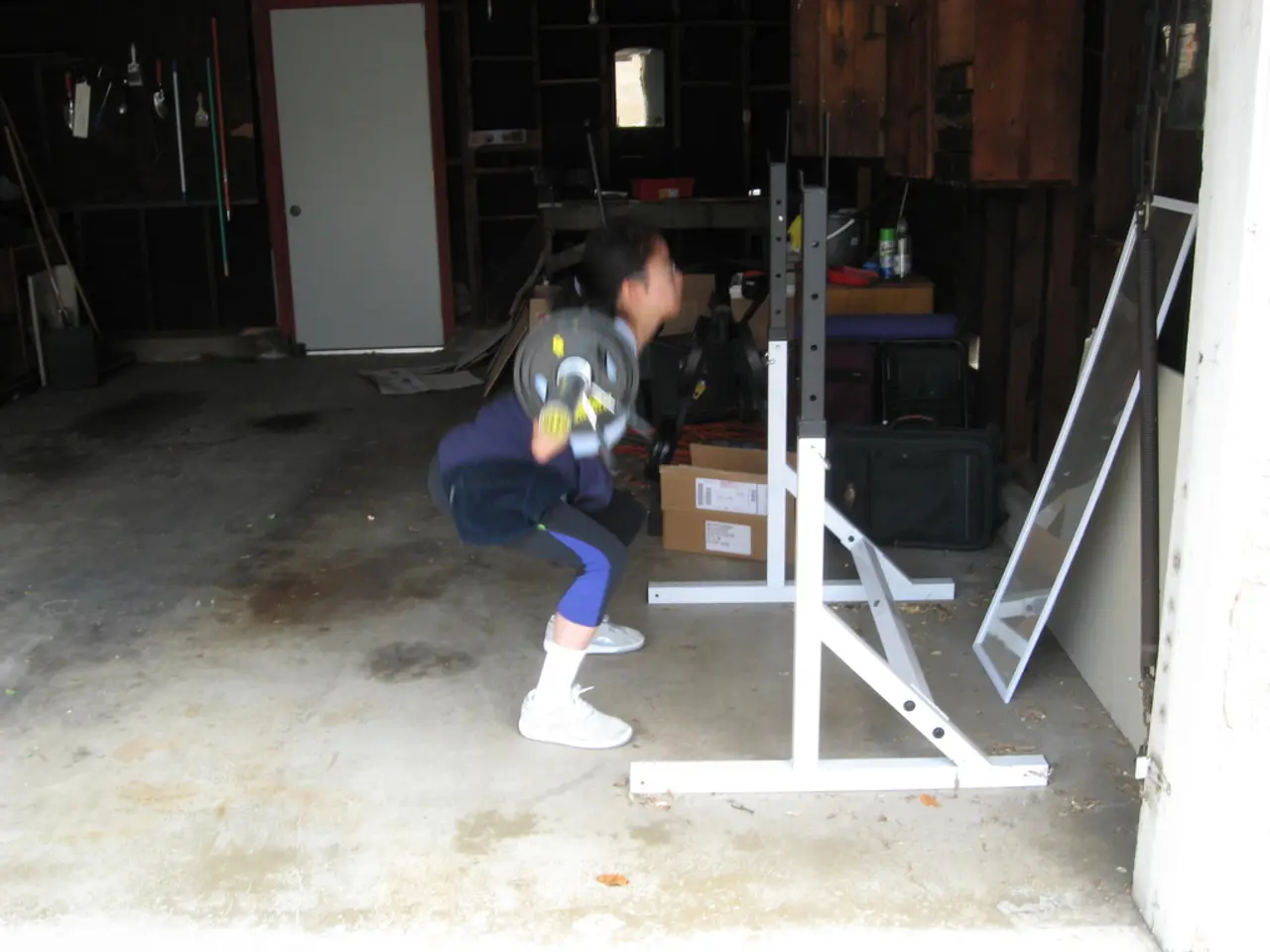Office Workout Routine: Boost Strength During Your Daily Work Sessions
==============================================================================================
Incorporating regular exercise into a desk job can be a challenge, but it's not impossible. Here's a guide to help you fit aerobic and strength training exercises into your workday.
Aerobic Exercises
While traditional aerobic exercises like jogging or cycling might not be feasible at a desk, you can still increase your heart rate and improve cardiovascular health with a few in-office activities.
- Take the Stairs: Using the stairs instead of the elevator whenever possible is a great way to elevate your heart rate and strengthen your legs.
- Walking Meetings: Suggest walking meetings or standing discussions to increase movement throughout the day.
- Desk Pedal or Under Desk Bike: Consider using a desk pedal or under-desk bike to keep your legs moving while you work.
Strength Training Exercises
You can incorporate strength training exercises into your workday with these simple desk workouts:
Essential Strength Exercises
- Chair Squats: Stand in front of your chair with feet shoulder-width apart. Lower your body as if sitting down, but stop just before touching the seat. Push back up to standing. Repeat for 8-12 reps.
- Chair Triceps Dips: Use your office chair to perform tricep dips. Place your hands on the edge of the chair and lower your body by bending your elbows. Straighten your arms to return to the starting position.
- Seated Leg Lifts: Lift one leg off the floor, keeping it straight. Hold for a few seconds, then lower it. Repeat on the other side.
- Calf Raises: Lift your heels off the floor while keeping your toes on the ground. Lower them back down slowly. Repeat for several sets.
- Glute Squeezes: Squeeze your glutes together, hold briefly, and release. Repeat multiple times.
Tips for Incorporation
- Schedule Breaks: Set aside short breaks (5-10 minutes) to perform these exercises. Aim for 2-3 sets throughout the day.
- Start Small: Begin with shorter sets and gradually increase the duration or number of repetitions as you build endurance.
- Warm-Up Routine: Always start with a simple warm-up routine like shoulder rolls, neck stretches, and waist twists to prepare your muscles for activity.
By incorporating these exercises into your daily routine, you can effectively balance aerobic and strength training while working at a desk.
- To make exercise part of a workday routine, find a partner or make exercise an office challenge, set alarms throughout the day, and reward yourself for reaching new milestones.
- Dr. Moogerfeld suggests keeping ankle weights in your desk to make the seated leg extension more challenging as you get stronger.
- Doing chair squats before sitting at your desk can help strengthen weakened glutes and tight hip flexors, potentially preventing "dead butt" syndrome.
Short periods of high-intensity physical activity throughout the day can positively affect weight and lower the risk for obesity. Exercise machines like bike desks, treadmill desks, and under-desk bikes and ellipticals can be useful for fitting in cardio exercise at work. Six strength-training exercises can be done at a desk without any special equipment, including butt clenches, desk push, hand press, thigh press, isometric muscle strengthening, and oblique twists. Isometric muscle strengthening can be done at the desk without anyone knowing, by contracting and holding muscles one at a time for three to 10 seconds. Push-ups and planks can work the core and upper body, with research showing the more push-ups one can do, the lower the risk of cardiovascular disease. To do a plank, keep your core and glutes tight while holding the position for 30 seconds. To do a push-up, lower your body toward the desk until your elbows bend to a 90-degree angle, then push away until your arms are straight again. Seated leg extensions can strengthen the quadriceps (thighs) without leaving the desk chair. To do a seated leg extension, sit in your chair, extend your right leg, and aim to raise it as high as possible without pain. Repeat on the left side. To add weight to calf raises, put something heavy on your lap or perform calf raises while standing behind your chair. Chair calf raises can strengthen the calves by raising your heels as if on your tiptoes, then releasing and lowering your heels back to the ground. Standing desks can help reset posture and some desks and equipment offer cardio options. Oblique twists strengthen the muscles along the sides of the abdomen, helping to burn fat, support the back, and create good posture. The U.S. Centers for Disease Control and Prevention (CDC) recommends at least 150 minutes of exercise per week, including aerobic and strength training.
Engaging in health-and-wellness activities, such as fitness-and-exercise, is crucial even for individuals with desk jobs. By performing aerobic exercises like taking the stairs and scheduling walking meetings, one can improve cardiovascular health. Strength training exercises like chair squats and desk pedal workouts can be easily incorporated into the workday, promoting workplace-wellness. To maximize the benefits, consider committing to a regular routine, perhaps by partnering with a colleague or setting alarms throughout the day.




